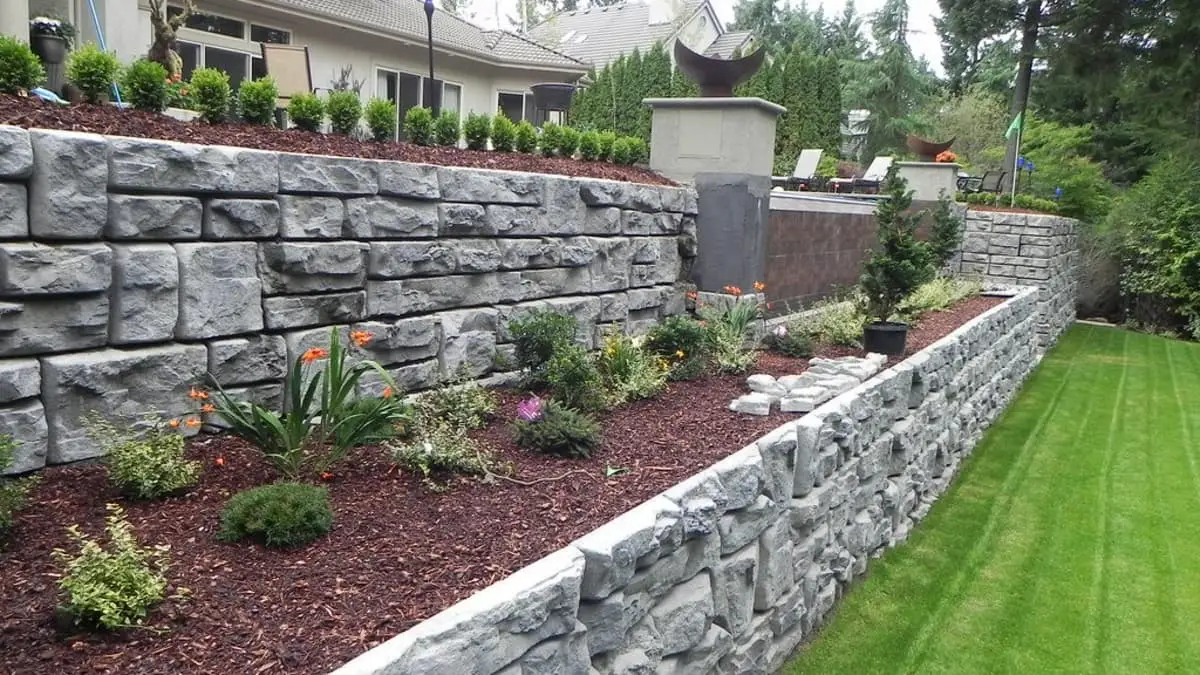
How to Build Retaining Wall on Slope
If your land is on a slope and requires support, constructing retaining walls can offer the needed stability as well as enhance the beauty of your garden. These constructions not only make the sides of hills more stable and help prevent soil from being washed away, but they also create additional level spaces that can be used for seats, walking paths, or areas with plants on slopes. In this article, we are going to show you the steps on how to build a retaining wall on slope using modular blocks that are piled up on an inclined area. Read on to learn more about successfully tackling this project!
Choosing the Right Materials
To begin constructing a wall that holds back earth on an inclined surface, it is essential to choose appropriate materials. Typically, for the blocks of this kind of wall, people use concrete or natural stone because both have their advantages and disadvantages. Concrete blocks are usually cheaper and simpler to put in place, but natural stone has a more organic appearance even though it might cost more.
It is necessary to think about the size and weight of the blocks. Smaller and lighter ones are better for a landscape that has a slope because they are simpler to handle and can adjust more easily to the incline. Modular blocks, available in different sizes and shapes, serve well for constructing retaining wall on a slope.
Preparing the Site
Before beginning construction, it is very important to get the site ready. This means you have to mark where the wall will go and clean up any rubbish or plants from that area. It is necessary too to check the angle of the ground and figure out if we need more ways for draining water so it doesn’t collect behind the wall.
Building the Base
For the stability of a retaining wall, making its base correctly is very important. Because we constructed the wall on an inclined ground, it is necessary to make the base even by excavating into the slope and forming a horizontal surface. This can be done using a shovel or excavator.
Then, a layer of pressed gravel must go over the flat base to make a strong foundation under wall blocks. It is very important to check that the base stays level and well-compacted so there are no problems with the wall moving or sinking later on.
Stacking the Blocks
After preparing the base, now is when to start putting the blocks one over another. First put a row of blocks on the gravel foundation, checking they are flat and in line with each other. Keep using a level to make sure the blocks are aligned straight, and tap them with a mallet so they sit tight.
When dealing with landscapes that are not flat, it is necessary to build the wall in steps. That involves moving every new row of blocks slightly back, around half the length of a block compared to the row below. Putting the blocks in alternating positions like this results in a retaining wall on a slope that is more solid and stable when built on an incline.
Finishing Touches
After the wall construction is finished, it’s necessary to do some detailed work. This might involve placing a cap over the wall for refinement or applying jointing sand to cover spaces between the bricks.
It is also necessary to think about putting in extra parts, like water drain tubes or geo grids, to make the retaining wall more stable and last longer.
Constructing a retaining wall on a slope might appear challenging, yet it is achievable for homeowners if they use suitable materials and methods. It’s important to select the correct materials, prepare the location well, establish a solid foundation, and methodically place the blocks with steps in the wall. By keeping these steps in your thoughts, you can build a retaining wall that looks good and works well, one that will endure many years. Proceed then to change the sloping land outside into an amazing area by constructing a nice-looking retaining wall. Enjoy your construction! Keep reading for more valuable information.
Additional Tips
If you feel unsure about your ability to construct it or the land is very inclined, think about hiring a professional who makes retaining walls.
- Put some plants and arrange a garden near the retaining wall to make it look nice and less harsh.
- Add lighting along the wall for both safety and ambiance at night. It is a retaining wall ideas for sloped backyard
- Be sure to check with local building codes before starting any construction.
- Speak to an expert to know if you need more ways for water to drain or stronger support.
If you use these suggestions and methods, it is possible to construct a retaining wall on a slope that provides support and also improves the appearance of your land. With careful preparation and carrying out the work well, your retaining wall will be useful as well as adding beauty to your garden area.
Maintenance and Care
Retaining walls, like other structures outside, need consistent upkeep to last a long time. It is essential to keep checking the wall often for cracks or any movement and fix these issues right away so that no more harm happens. Also, if you make sure that the wall surroundings are clear of rubbish and plants, it can stop the soil from wearing away and keep the wall steady.
One must also be careful while doing gardening or different tasks close to the retaining wall on a slope so as not to harm it. If you maintain and look after your retaining wall well, it will keep offering strength and attractiveness for a long time ahead.